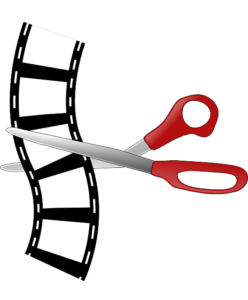Developmental editing is a critical step in the publishing process for thriller novels. This type of editing helps to ensure that the story is well-constructed and flows smoothly from beginning to end. In this blog post, we will discuss the different steps involved in developmental editing and what to look for while you are doing it. We’ll also provide some tips on making your thriller manuscript the best it can be!
The different types of developmental editing
Developmental, substantive, or content editing
Structural editing
Copy editing
Line editing
Mechanical editing
Developmental editing is generally the first step to editing you should take after finishing your first draft. It helps to identify any areas where you may need to do additional research, or where there are gaps in your knowledge. By doing the developmental edit first, you can save yourself a lot of time and effort later on.
The steps to take during developmental editing
Developmental editing should not be confused with copyediting or proofreading. Copyediting focuses on correcting errors in spelling, punctuation, grammar, and syntax. Proofreading is the final step in the editing process and typically involves checking a text for accuracy against a set of editorial standards or against another corrected version of the text.
The steps involved in developmental editing are assessment, planning, rewriting, and proofreading.
Assessment
Developmental editing assessment is a process of evaluating a manuscript to identify its strengths and weaknesses, as well as potential areas of improvement. This can be done through various means, such as reading the work aloud, evaluating the structure and organization of the piece, or assessing the writing itself for clarity and style. Ultimately, a development edit can save an author time and energy by helping to strengthen their manuscript before it is sent out for review or publication.
Planning
Planning includes things like creating a timeline for your story, developing character arcs, and outlining the plot. Some people find it helpful to have a developmental editor help them with this planning process, but it’s also possible to do it independently.
Rewriting
Rewriting is the process of revising a text for clarity, coherence, and better flow. It involves restructuring paragraphs and sentences, removing unnecessary words and phrases, and making sure that each sentence contributes to the whole.
Proofreading
Proofreading is the final step before publishing your work, where you’ll check for typos and other errors. Proofreading is important to catch small mistakes that can affect the overall meaning of a sentence or paragraph. Proofreading should be done after the developmental edit is complete so that all changes made during the editing process are taken into account. Together, developmental editing and proofreading can help you create a high-quality, polished thriller.
What to look for when you’re developmental editing a thriller

The first step in developmental editing is to read the manuscript through once to understand the plot and characters.
Next, go back through the manuscript and make notes about any plot holes or inconsistencies.
After that, focus on character development – are the characters believable and likable, and do they grow and change throughout the story?
Finally, check for grammar mistakes, typos, and consistency in terms of tense, point of view, etc.
How to make your thriller shine through the competition
The goal is to make the story as strong as possible before sending it off to agents or publishers.
Developmental editors focus on the overall structure and organization of a piece of writing. Here are some examples of developmental edits:
-Improving the logic or argument of the piece
-Streamlining the organization
-Adding, removing, or rearranging sections
-Clarifying confusing language or jargon
-Filling in plot holes
-Providing feedback on character development
-Offering suggestions for ways to make the piece more effective overall
-Suggesting changes to improve the pacing and tension of the story
-Evaluate the characters and make sure they’re believable and compelling
So whether you are doing the editing yourself or with an editor, look for plot holes, inconsistencies, problems with the structure and characterization.
Be open-minded. Be prepared to rewrite. Focus on the big picture. Practice patience. All writers have to go through these things, from famous writers of bestsellers to new writers.
Q&A with a professional developmental editor

Developmental editing is an essential step in the publishing process, and you should not skip it. If you want to ensure that your thriller is the best it can be, hire a developmental editor.
But if you have decided to self-edit and take the time to edit your story thoroughly, you will end up with a thrilling and enjoyable book to read. Developmental editing is a lot of work, but producing the best possible book is worth it. So once you’re happy with your story, the editing process can start.
Not having English as my first language, I knew I needed to hire an editor. I looked at it as an investment and searched for a good editor. For me, that was the right decision.
Here are some of my Q&A with a professional editor
Q: Why do I need a developmental edit?
A developmental edit is essential if you want to make your thriller the best it can be. A good editor will help you tighten up your plot, improve your structure, strengthen your characters, and polish your style.
Q: How can I improve my thriller’s pacing?
You can improve your thriller’s pacing by increasing the tension and suspense throughout the story. You can do this by introducing more conflict, suspenseful scenes, and plot twists and by resolving old conflicts quickly so that readers are never left bored or frustrated.
Additionally, it can be helpful to use short chapters and paragraphs to keep the story moving quickly and avoid info dumps that slow down the story. Make sure your climax is powerful, the payoff is worth the wait, and leave readers wanting more.
Q: How much does a developmental edit cost?
For a full developmental edit of a 100,000-word novel, you can expect to pay between $2000 and $4000 depending on the length and complexity of the manuscript.
Q: How long does a developmental edit take?
A full developmental edit can take anywhere from two weeks to two months, depending on the size of your manuscript and the editor’s schedule.
Q: What do I need to do before you start the edit?
The first step is to send us a query letter, which should include the following:
-A brief description of your book
-The target audience for your book
-The genre of your book
-The word count of your book
-A brief bio about you, the author
After you’ve sent the query letter, we will set up a call to discuss the project in further detail.
During this call, we will:
-Discuss your vision for the book
-Talk about the different steps involved in the editing process
-Set up a schedule for the edit
-Send you a contract outlining the terms of our agreement
The steps to take when you’re self-editing

Again, developmental editing is a lot of work, but producing the best possible book is worth it. So once you’re happy with your story, the editing process can start.
Before you start, make a copy of your original manuscript and use this for editing. Rename the document to clarify that it “belongs” to your draft copy. If you have any old notes and worries about your novel, write them down in one of the copies.
At this stage, we highly recommend that you put your novel away for a few weeks. The most famous example of this advice comes from Stephen King in his book On Writing where he suggests that you ‘go work on something else for a minimum of six weeks.’ But it doesn’t have to be that long. If you feel you’re ready in less than four weeks, go for it.
There are a few reasons why developmental editing is typically done a few weeks after the initial writing is completed. First, it allows the author to step back from their work and get some distance from it, which can help them see their work more objectively and identify areas that need improvement.
Secondly, developmental editing usually requires more time than other types of editing, such as line editing or proofreading. This is because it involves making larger-scale changes to the structure and content of the novel.
Finally, doing developmental editing at this stage can help prevent potential problems down the road, such as having to make significant changes to the book after it’s already been published.
Making the story strong before sending it to agents or publishers

Agents and publishers will be looking for a well-crafted story with believable characters and a solid plot.
So how do you go about developmental editing? Here are some steps to get you started.
The first step is to read your story all the way through, from beginning to end. As you’re reading, note any plot holes or inconsistencies. Are there any scenes that feel out of place or unnecessary? Is the pacing too slow in certain parts or too fast in others?
After that, focus on character development – are the characters believable and likable? Do they grow and change throughout the story?
Next, go back through the manuscript and make notes about any plot holes or inconsistencies. Could the pacing be improved?
Finally, check for grammar mistakes, typos, and consistency in tense, point of view, etc.
By following these steps and taking the time to edit your story correctly, you will end up with a thriller that will keep your readers on the edge of their seats!
Rewriting is where you’ll put that strategy into action, revising the text to make it more substantial.
Proofreading is the final step before publishing your work, where you’ll check for typos and other errors.
To polish a story, you need to make sure all the elements work together cohesively.
In conclusion
Developmental editing is an essential step in getting your thriller published. By editing your work and making it shine above the competition, you’ll be one step closer to seeing your book on shelves.
If you’re working on your first novel and are looking for more help with your writing, please check out my other articles at https://ullahakanson.com/blog/
Best of luck with your writing!
Ulla

